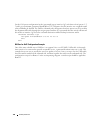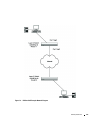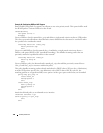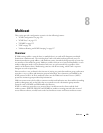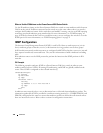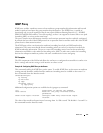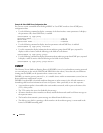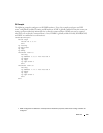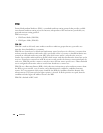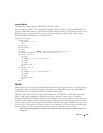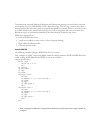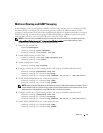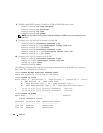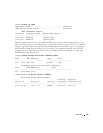
154 Multicast
PIM
Protocol Independent Multicast (PIM) is a standard multicast routing protocol that provides scalable
inter-domain multicast routing across the Internet, independent of the mechanisms provided by any
particular unicast routing protocol.
PIM has two types:
• PIM-Dense Mode (PIM-DM)
• PIM-Sparse Mode (PIM-SM)
PIM-SM
PIM-SM is used to efficiently route multicast traffic to multicast groups that may span wide area
networks where bandwidth is a constraint.
PIM-SM uses shared trees by default and implements source-based trees for efficiency; it assumes that
no hosts want the multicast traffic unless they specifically ask for it. It creates a shared distribution tree
centered on a defined rendezvous point (RP) from which source traffic is relayed to the receivers.
Senders first send the multicast data to the RP, which in turn sends the data down the shared tree to the
receivers. Shared trees centered on an RP do not necessarily provide the shortest, most optimal path. In
such cases, PIM-SM provides a means to switch to more efficient source-specific trees. A data threshold
rate is configured to determine when to switch from shared-tree to source-tree.
PIM-SM uses a Bootstrap Router (BSR), which advertises information to other multicast routers about
the RP. In a given network, a set of routers can be administratively enabled as candidate bootstrap
routers. If it is not apparent which router should be the BSR, the candidates flood the domain with
advertisements. The router with the highest priority is elected. If all the priorities are equal, then the
candidate with the highest IP address becomes the BSR.
PIM-SM is defined in RFC 4601.



